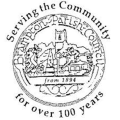Brantune (xi cent.); Brantone, Bramtone (xii-xiii cent.); Braunton, Brampton (xiii cent.)
Fifteen hides in BRAMPTON were held by Edward the Confessor and passed in 1066 to William the Conqueror. Ranulf, brother of Ilger, had the custody of the manor and Elric, the King's thegn, held a hide and a virgate. (fn. 41) The manor remained in the hands of the Crown until 1194 and Henry II, it is stated, had here 2 carucates of the manor in demesne with a messuage and woods, meadows, mills and pleas, and tilled those 2 carucates with his own ploughs. The men of the manor at the same time held 28 virgates in villeinage with the meadow pertaining thereto, some at a rent of 5s. a virgate for all services, and others by the services of ploughing, weeding, carrying and carting of food and venison, and giving heriot and merchet.
In the Domesday Book survey of 1086, Brampton was listed as Brantune in the Hundred of Leightonstone in Huntingdonshire.[4] It had two manors, yielding aggregate rents to their lords of the manors in 1066 of £20, which had increased to £21.5 by 1086.[5] Domesday recorded a total of 42 households, which gives a population estimate of 125–200.[5][6]
BRAMPTON PARK, called for many centuries a manor, can be traced back to the twelfth century and was held in socage of the king until at least the end of the fourteenth century, (fn. 96) and afterwards in chief. Through the centuries it passed through various families until, with an estate of £14,000 a year Robert Bernard Sparrow, inherited the estate in 1789. He was then at Westminster School. Robert, afterwards Brigadier General, married Lady Olivia Acheson, daughter of the first Earl of Gosford, and died in 1805 leaving a son Robert Acheson Bernard St. John Sparrow, and a daughter Millicent. The son died in 1818 and his sister and heir Millicent married Viscount Mandeville, afterwards 6th Duke of Manchester. Lady Olivia outlived the Duke and Duchess and died in 1863. She made Brampton Park her home and was a philanthropist and a friend of Wilberforce and Hannah More. Brampton Park descended to her daughter's great-grandson, the present Duke of Manchester. (fn. 130)
Brampton Park covers about 100 acres to the south-west of the village. The history of Brampton Park (q.v.), and probably that of the house, goes back to the 12th century. In 1328 the house was said to be ruinous. An Elizabethan house seems to have been built here, probably by the Throckmortons, which is described as a fair brick house. (fn. 15) This building was incorporated in a house probably built by Sir John Bernard, who succeeded to the property in 1666. (fn. 16) The mid 17th-century house was rebuilt by Lady Olivia Bernard Sparrow about 1820. Over her front door were the arms of Bernard, Bernard with St. John, and Sparrow and Bernard quarterly impaled with Acheson. Lady Olivia lived here until her death in 1863. In 1889 it became an institution for the cure of stammerers and was completely burnt down in 1907, when a smaller house was built on the site, which is now the residence of Viscount Mandeville.
The present Port Holme may represent the 'great meadow of Brampton in Estholm super Oldeland near the ford' mentioned in 1205, and lying on the north-east boundary. (fn. 32) Seventeenth-century names are: Long Stonegill (Stonehill), Bolsgraffe meadow, Banbury close, 'the bailiff's swayth near the ford'; and Haddon dole, Shipping dole, Sharndole, and Thackingdole, all in Portholme. (fn. 33)
Brampton has associations with the diarist Samuel Pepys.[8] Legend has it that his fortune is buried somewhere in the village: during the panic caused by the Dutch raid on the Medway in 1667 he buried his gold in the garden of Brampton House and was never sure how much of it he had succeeded in recovering.[8] Brampton was the home of his uncle, Robert Pepys, elder brother of the diarist's father, whose house still stands. Samuel Pepys is known to have stayed there and at the Black Bull Inn in the village
Brampton has an 18-hole golf course featuring the par-3 4th, a signature hole with a green almost completely surrounded by water, often referred to as England's hardest par-3.[citation needed]
Geoff Capes, the Commonwealth shot-put champion and twice winner of the title World's Strongest Man, served as a police officer in Brampton in the 1970s.[2
